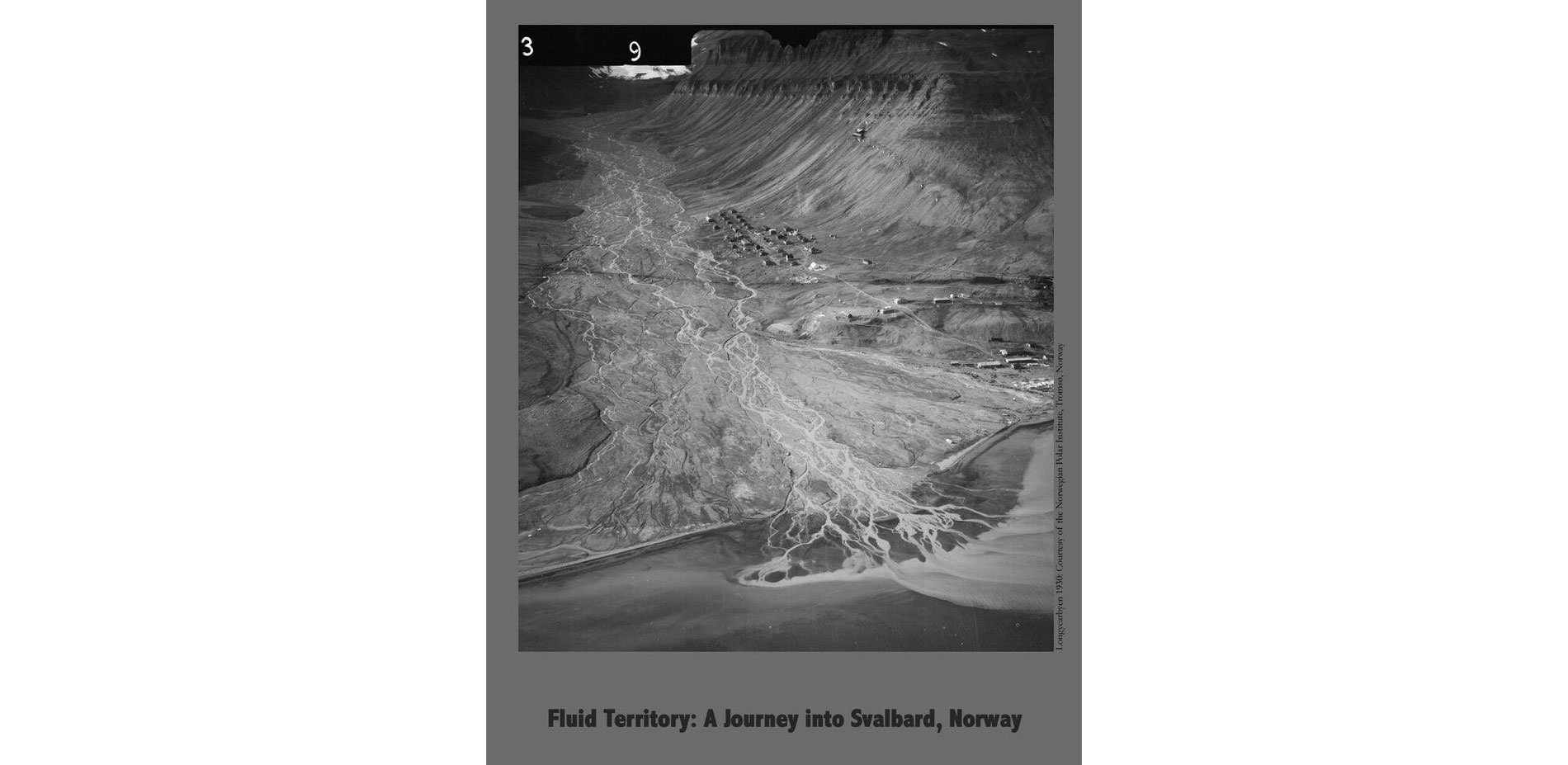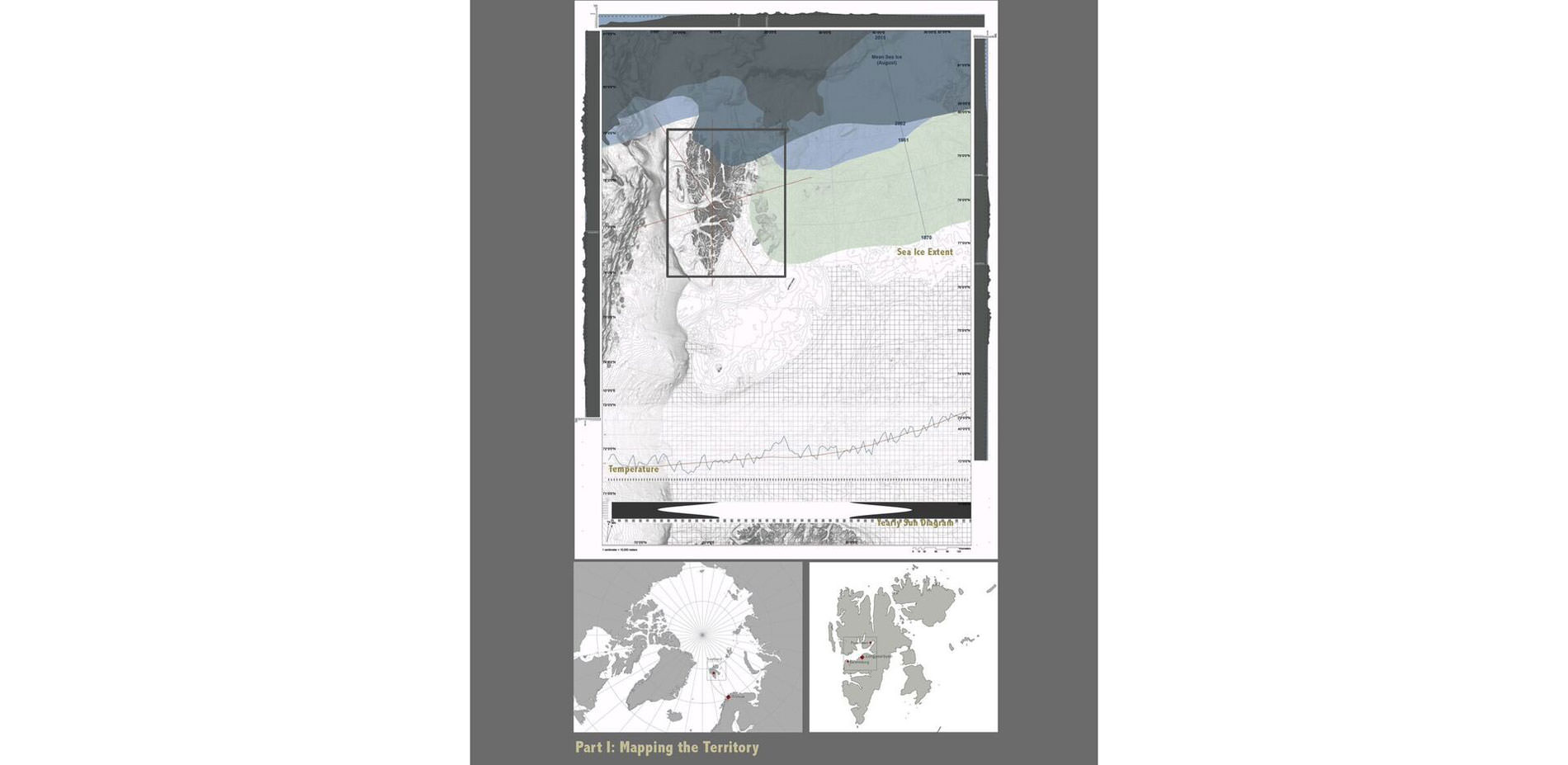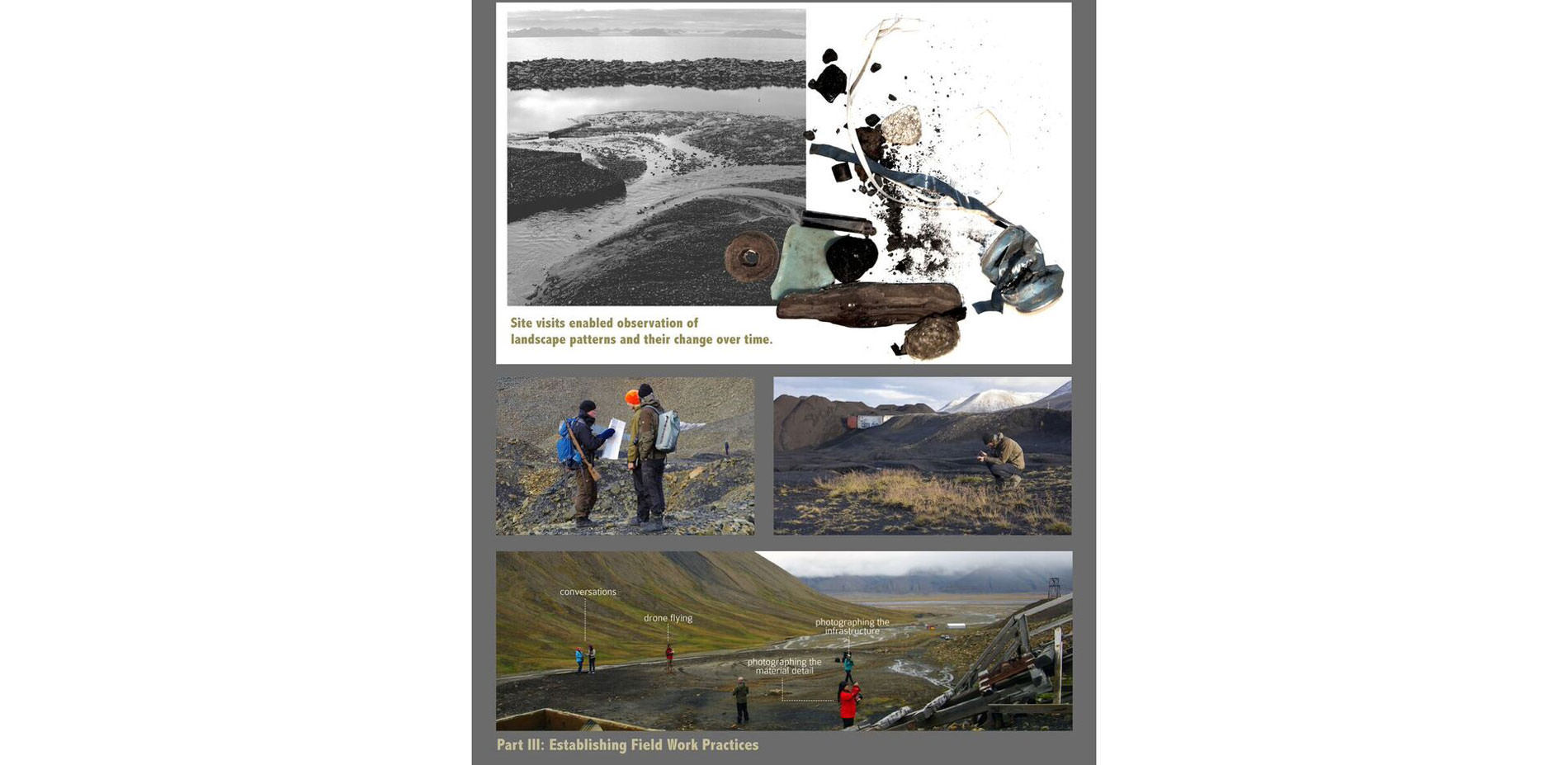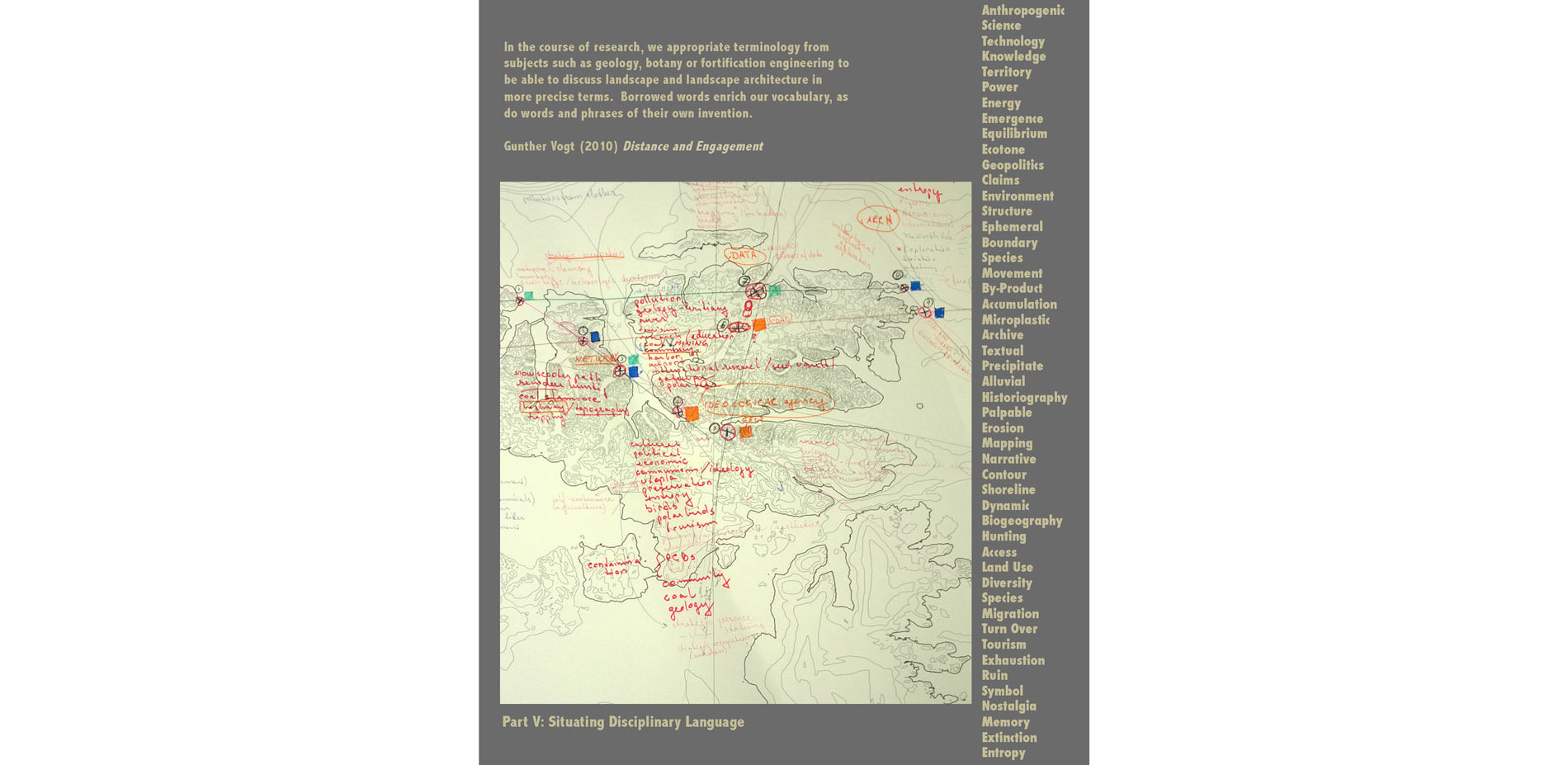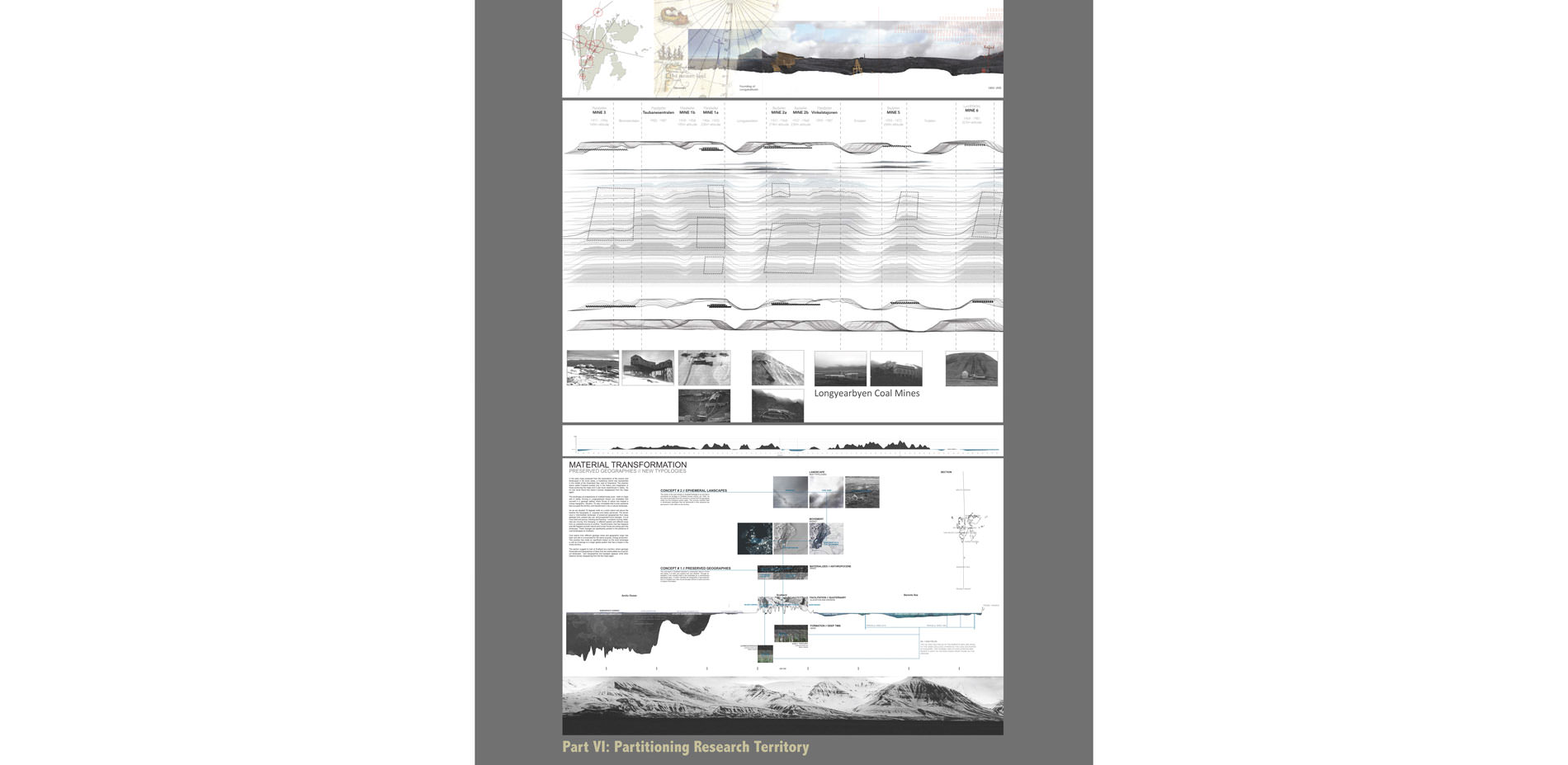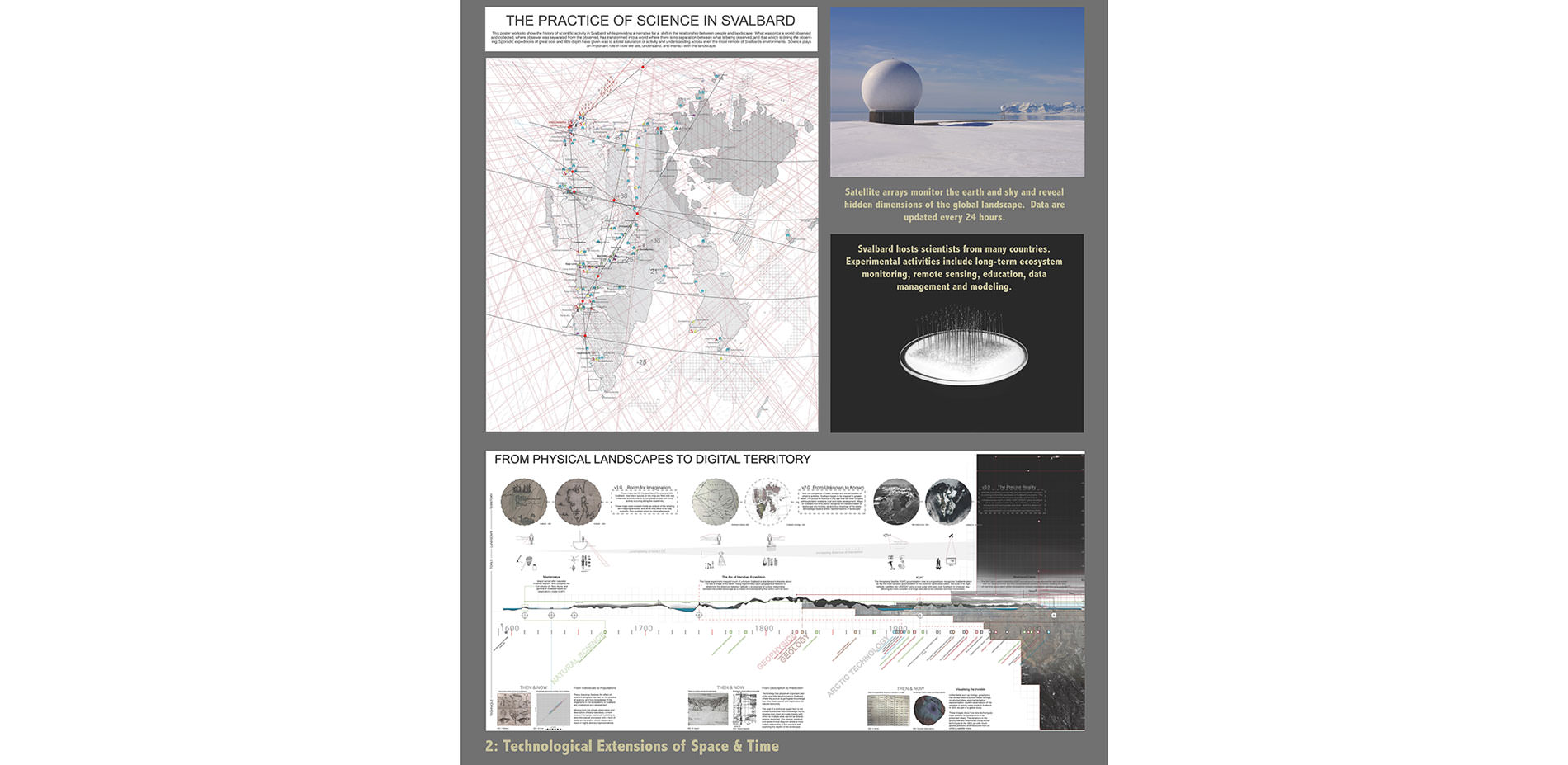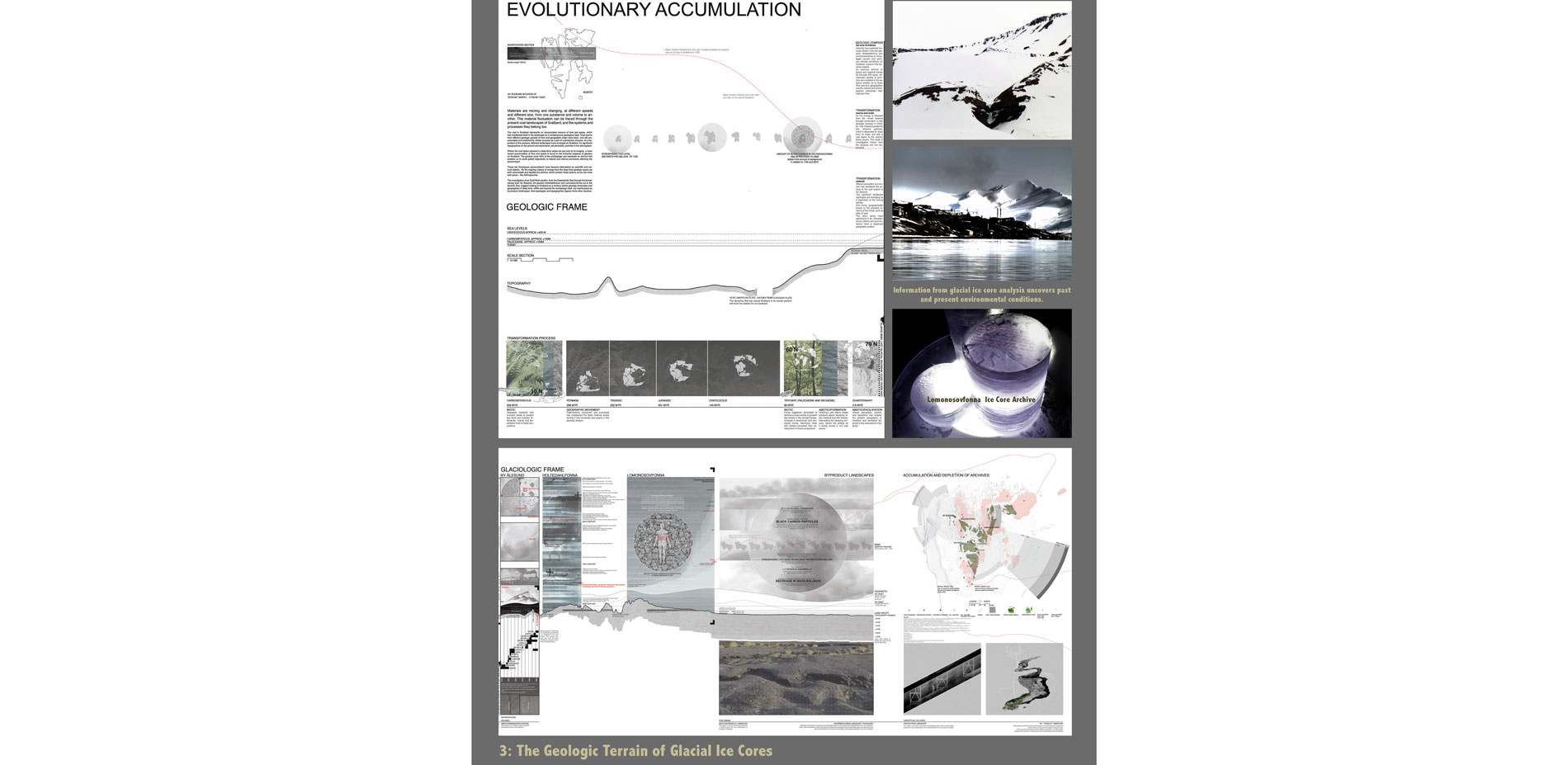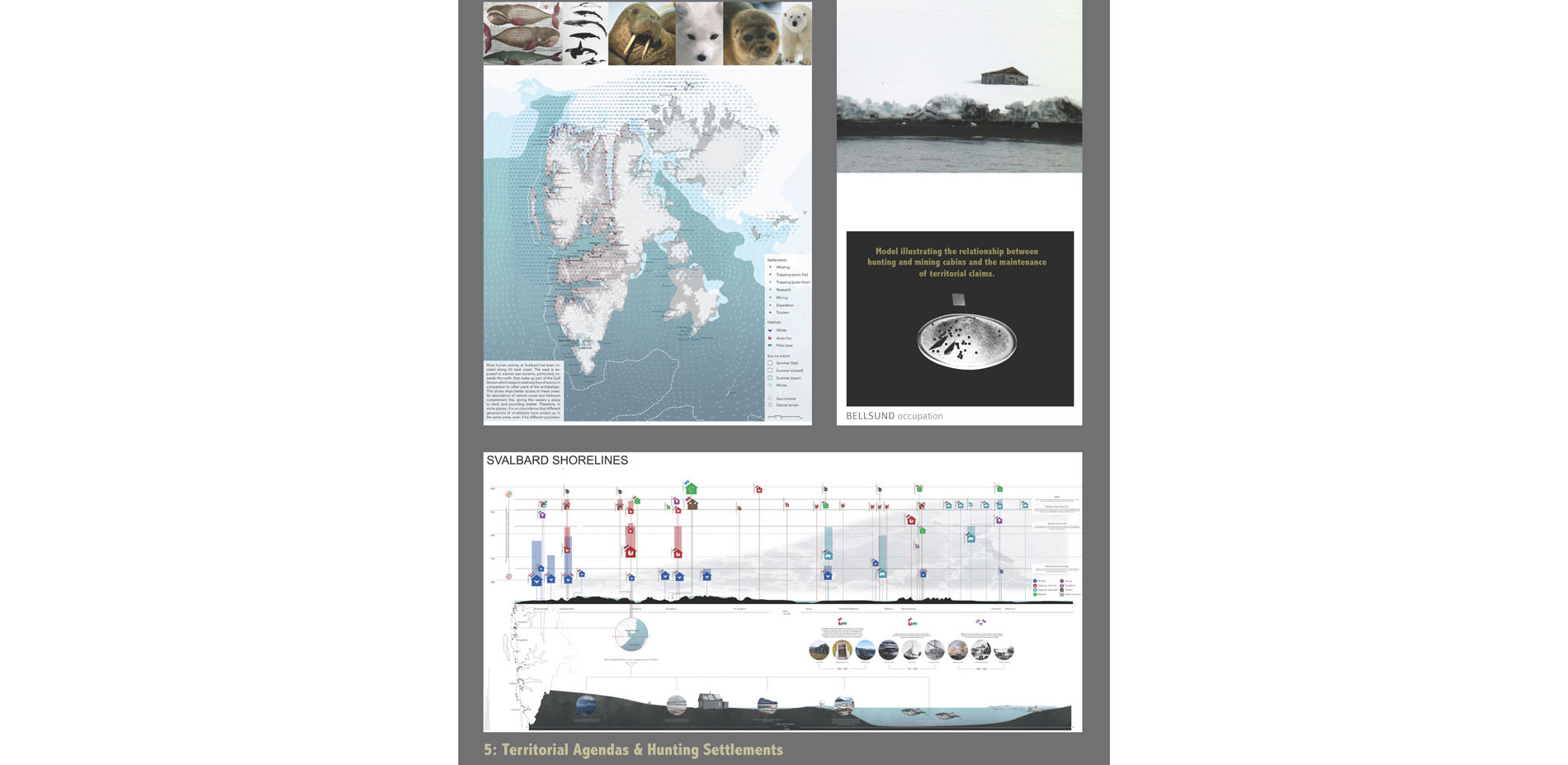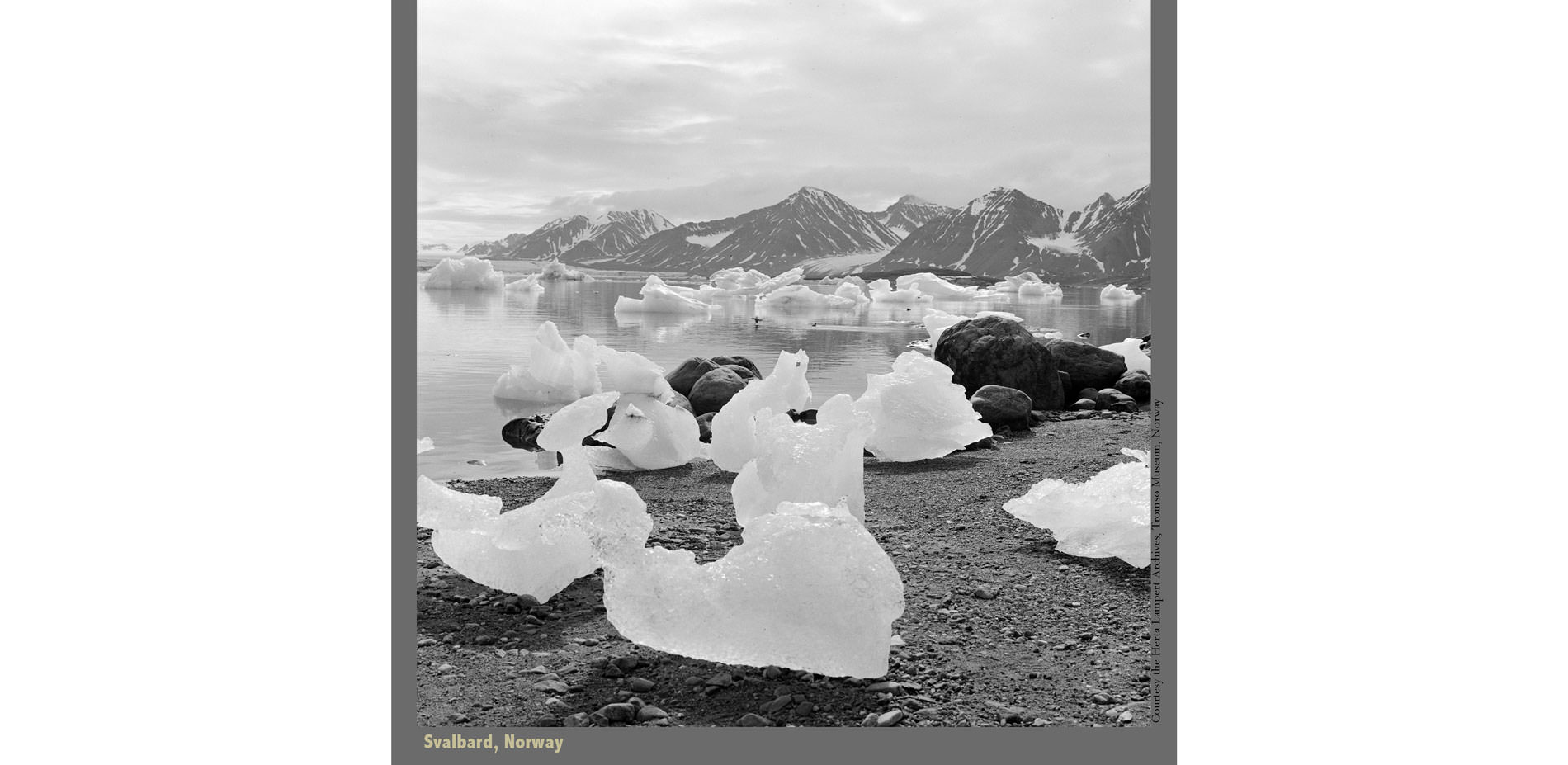Fluid Territory: A Journey into Svalbard, Norway
Award of Excellence
Research
New Brunswick, NJ, USA | Kathleen John-Alder, ASLA; Rutgers University; The Tromsø Academy of Landscape and Territorial Studies part of The Oslo School of Architecture and Design
Research projects are difficult because there is a wide divergence of opinions as to what constitutes research. But this one rang all the bells.
- 2017 Awards Jury
PROJECT CREDITS
Team Leaders and Principal Investigators
- Kathleen John-Alder, ASLA, Rutgers the State University of New Jersey;
- Janike Kampevold Larsen, Oslo School of Architecture and Design, and Tromsø Academy of Landscape and Territorial Studies
Associated Investigators the Future North Project
- Peter Hemmersam, Oslo School of Architecture and Design;
- Andrew Morrison, Oslo School of Architecture and Design
Project Managers
- Mats Kemppe, Tromsø Academy of Landscape and Territorial Studies;
- Eimear Tynan, Tromsø Academy of Landscape and Territorial
Photography Credit
- Norwegian Polar Institute
- Janike Kampevold Larson
- Kathleen John-Alder Eimear Tynan
- Ricardo Pravettoni
- Rassmuss Weitze
- Herta Lampert Tromsø Museum
Additional Project Credits
Affiliated Research Institutions and Co-Principal Investigators:
- Oslo School of Architecture and Design and Troms Academy of Landscape and Territorial Studies:
- Janike Kampevold Larson, Andrew Morrison, Peter Hemmersam, Lisbet Harboe, Eimear Tynan, Mats Kemppe
Cartography Consultant
- Ricardo Pravettoni
Research Associates
- Ellen Oettinger, Associate ASLA, Rutgers University
- Brona Keenan, Troms Academy of Landscape and Territorial Studies
- Hans Eriksson, Troms Academy of Landscape and Territorial Studies
- Rassmuss Weitze, Troms Academy of Landscape and Territorial Studies
- Jérome Codère, Troms Academy of Landscape and Territorial Studies
- Audrey Touchette, Troms Academy of Landscape and Territorial Studies
- Matthew Poot, Tromsø Academy of Landscape and Territorial Studies
- Charlie Laverty, Tromsø Academy of Landscape and Territorial Studies
PROJECT STATEMENT
The climate, environment, demography, settlement patterns, and landscape of the Arctic are changing rapidly. This transformation has led to intense debates and extensive research regarding the future of the circumpolar north. The research project “Fluid Territory: A Journey into Svalbard, Norway” uses an iterative logic of giving and receiving to explore the potential future of this hyper-networked space. This is accomplished by illustrating how external influences, such as chemical pollution, tourism and resource extraction, impact the physical terrain and climate of Svalbard, and thus the migratory and habitation patterns of its marine and terrestrial organisms. Conversely, the project also illustrates how the territorial agency of Svalbard, as a repository of cultural heritage and through institutions devoted to science and satellite monitoring, extends outward to influence the global community. This study, conducted by a multi-national team of researchers, is noteworthy for its geographical extent, its innovative combination of cross-disciplinary information, its multi-scalar mapping techniques, and for the way it innovatively expands the future possibilities of the investigative terrain of landscape architecture.
PROJECT NARRATIVE
For centuries the Artic has been viewed as one of the last true bastions of transcendent wilderness—an awesome, terrifying, and yet pristine territory celebrated for the way it appears to stand apart from the taint of human interference. It is also a terrain of stark contrasts and dramatic seasonal changes that move from the palpable stillness of silent, dark winters to bright summers alive with the baroque movements and sounds of nature. Cold and scentless, it is nevertheless a realm of heightened sensation and savage beauty that contests the certainty of what it means to be human.
But the Artic is not quite what it seems, or at least not what it has been imaginatively made to seem in countless narratives of escape and adventure. Even though it has often been historically depicted as a blank white space on maps, this region of the globe is far from being a terra incognita. A rich repository of resources, its land and waters have been hunted and mined for centuries. Resource extraction began with an international coterie of whalers who fought over, and ultimately depleted the territory’s population of whales. Hunters and trappers came next. In the late 19th century, coal mining supplanted fur and ivory trading as the main resource industry. This history of occupation and exploitation has left distinct marks on the land. Furthermore, because the Artic is cold, remote and sparsely vegetated traces of human agency and occupation remain visible for decades, allowing them to be easily deciphered and read.
Today the environment, demography, settlement patterns, and landscape of the Arctic are changing rapidly in response to anthropogenic climate disruption. The transformation has lead to intense debates and extensive research regarding the future of the circumpolar north. “Fluid Territory: A Journey into Svalbard”, one of several interdisciplinary, critical mapping studies conducted under the auspices of the Future North research project, uses an iterative logic of giving and receiving to explore what the future may hold for this far-northern territory. This is accomplished by demonstrating how outside global influences, such as chemical pollution, tourism and resource extraction, have impacted the physical terrain and the climate of circumpolar north, and thus the migratory and habitation patterns of its marine and terrestrial organisms. Conversely, the study also illustrates how the territorial agency of the region, as both a repository of cultural heritage and a site of scientific data collection and geospatial satellite monitoring, has extended outward to influence the actions of the larger global community.
Svalbard, the site of this study, is an archipelago of islands located in the Arctic Sea halfway between Norway and the North Pole. The Svalbard Act of 1920, part of the Versailles Agreement of World War I, granted sovereign authority of the archipelago to Norway. The Act also honoured existing mining claims and the territorial rights of other countries as long as they maintained their presence on Svalbard, which complicates territorial dynamics.
“Fluid Territory: A Journey into Svalbard” includes the following research methods: a GIS topographic study that chronologically traces the fluid interface between land, water and climate; immersive experiences and situated impressions gathered during site visits; photographic documentation of the material qualities of place; a survey of the scientific literature and its quantitative descriptions of the biophysical terrain; a qualitative survey of the territory that draws upon memory, oral history, art and literature; historiographical archival research; and an epistemological study of research terminology.
Research findings were documented as a series of critical maps, each of which focuses upon different topics and questions. Each mapping study can be read independently as a singular narrative, or they can be grouped into a multi-voiced bricolage that presents a more nuanced tale of time, climate, geology, change, natural history, adventure, resource exploitation and politics. No matter how the research findings are read, they provide new information and insight into previously hidden territorial logics and their potential agency. Furthermore, the flexibility inherent to this multipartite method of inquiry has allowed the project team to travel deeply into the intriguing complexity and possibilities of landscape research. While our work provides no definitive answer as to what the future may hold, the reality we ultimately mapped, much like the Arctic itself, has the innate capability to fluidly accommodate planned actions and serendipitous accidents.
One of the most intriguing aspects of the work is the dialogue between the panoptic cartographies delineated in plan and the environmental datascapes delineated in section, and the different ways they code the landscape. The plans deploy defined measurements and succinct labels to illustrate territorial dynamics. The sections elucidate a more imaginative terrain that charts unexpected linkages between objects, ideas, assembly, space and chronology. Although both operations document location, ownership, morphology and change over time—the visual language of the plans tends toward grammatical convention and proper punctuation, while the visual language of section favours textual deconstruction and exploratory reading. When these two methods of documentation are synergistically combined, novel narratives emerge.
It is also important to note that even though the material presented is nominally valueless, like any attempt at narration, this study sanctions some voices over others, which makes the work as much about personal interest as it is about research methodology, factual historiography, or the visualization of information. In this sense, “Fluid Territory: A Journey into Svalbard” purposefully oscillates between the reality of things and imaginative fancy in order to present landscape research as a fact-finding endeavor and an intentional provocation. The tension between these parallel agendas forces viewers to confront and question their normative suppositions and values, including the way these suppositions and values inflect our perceptions of, and actions toward the land.
Equally critical is the way the study presents the story of the Arctic and its cultural history as a visually enticing, multi-layered system of actions and consequences that unite seemingly disparate and often contradictory social, economic and environmental phenomena. Moreover, this strategy enacts modes of fact-finding and data collection that range from the immediacy of embedded, on-site observations scaled to the body to the analytics of data-driven remote sensing and aerial satellite observations that are cosmic in scale. Hence the work recapitulates, by example, the different understandings of, and actions toward landscape that underlie the history of exploration in this territory.
But perhaps most important, in this research narrative nature is not silent. Instead, as notably argued by the environmental historian William Cronon in his discussion of environmental historiography, it has a clear voice that responds with material configurations that illustrate the consequences of human action. Cronon further argues it is only when we try to add coherence and meaning to nature’s actions that the narratives produced inevitably reflect culturally and socially mediated values. Nonetheless the resulting story is as much the agency of nature as it is the consequence of human will. Put simply, the Artic is a co-author of this study. By purposefully documenting its voice we hope to set into motion a series of events that will, in some small way, transform our thinking about the Artic and the disposition of its territory, and thus the fate of the future north.
